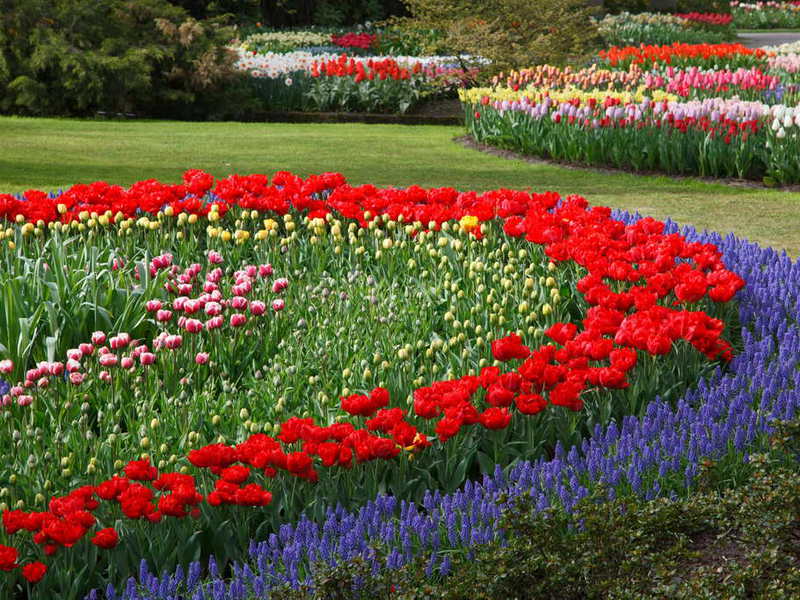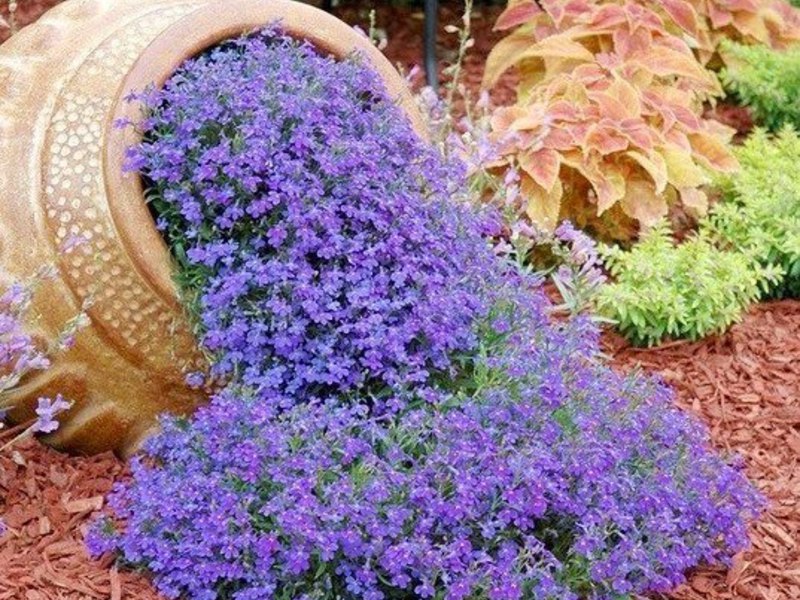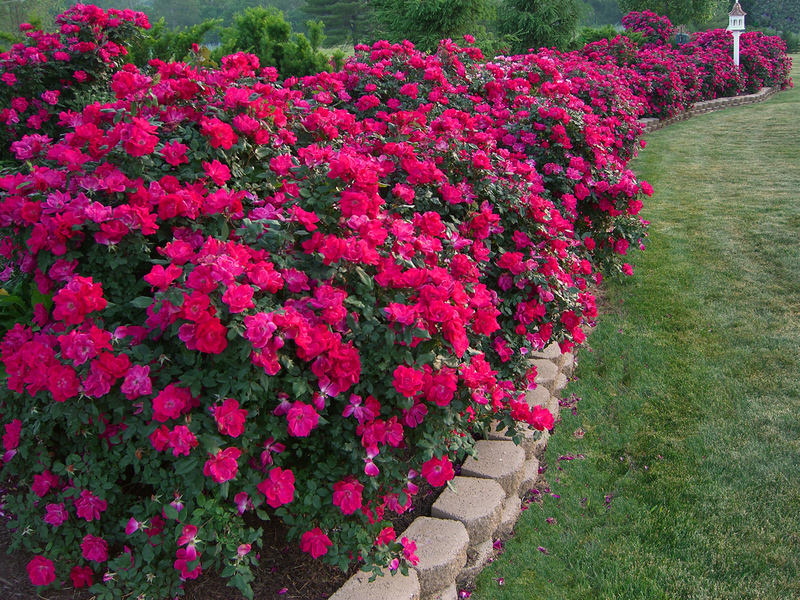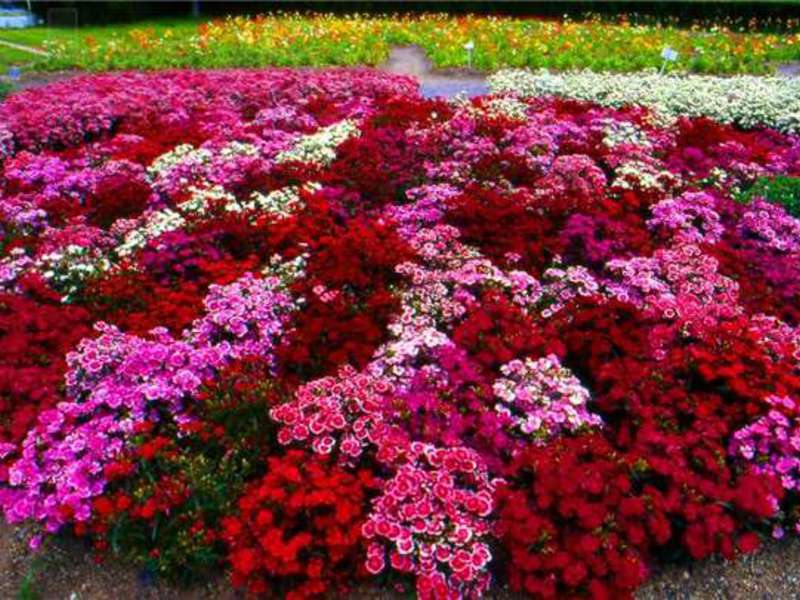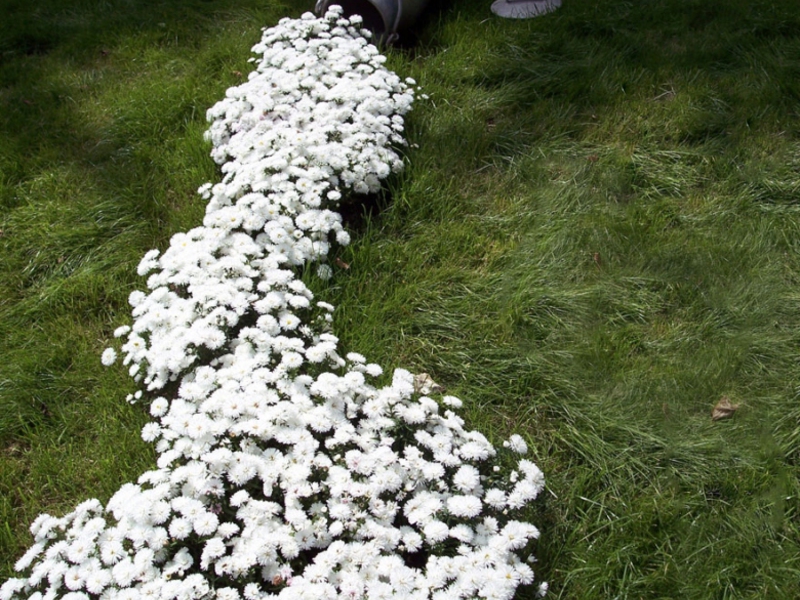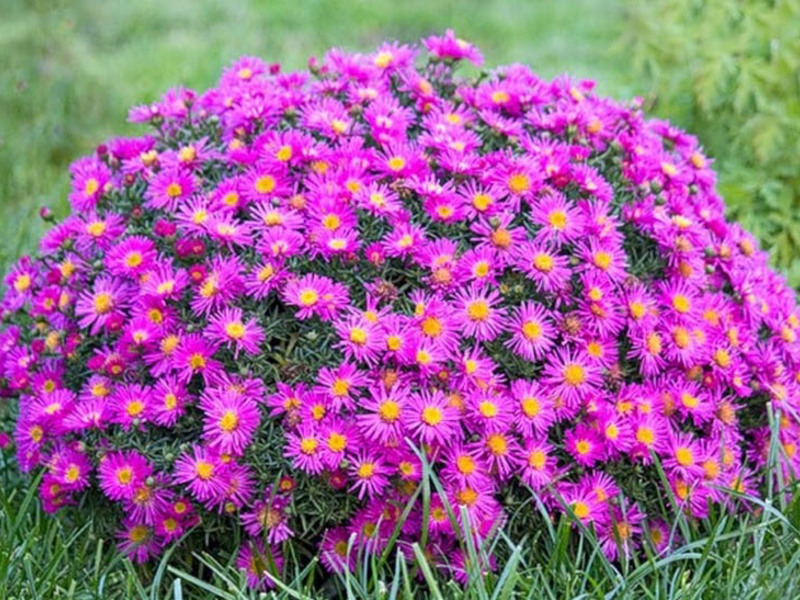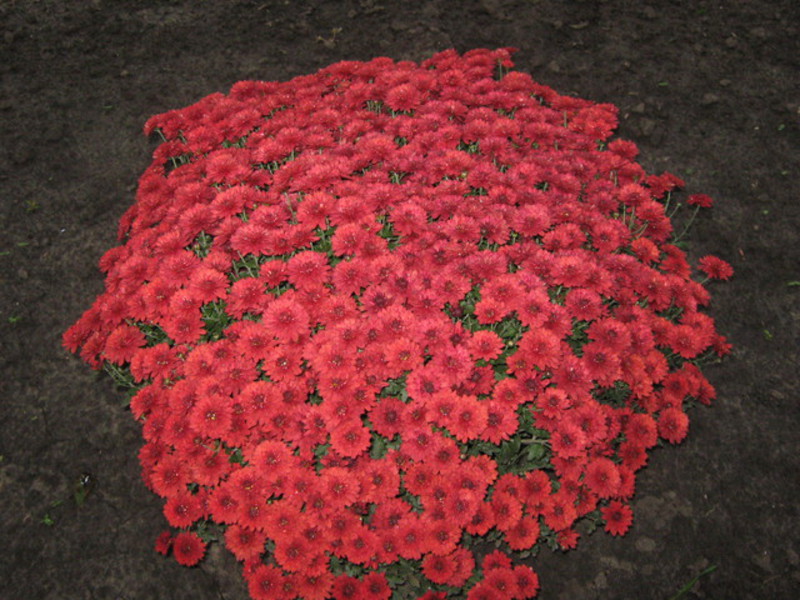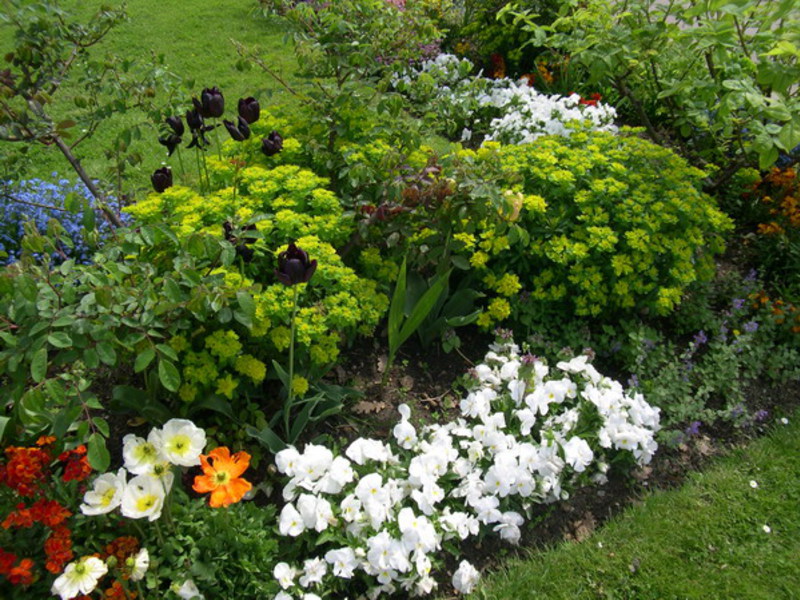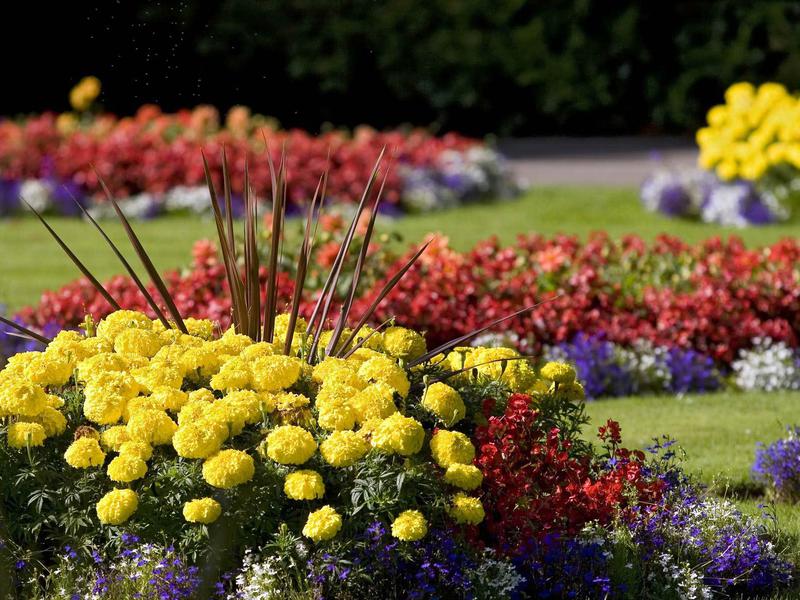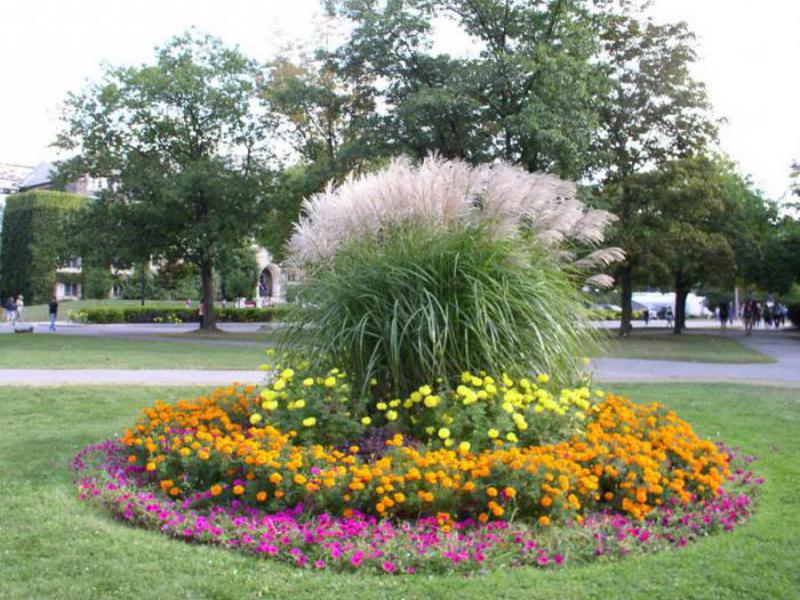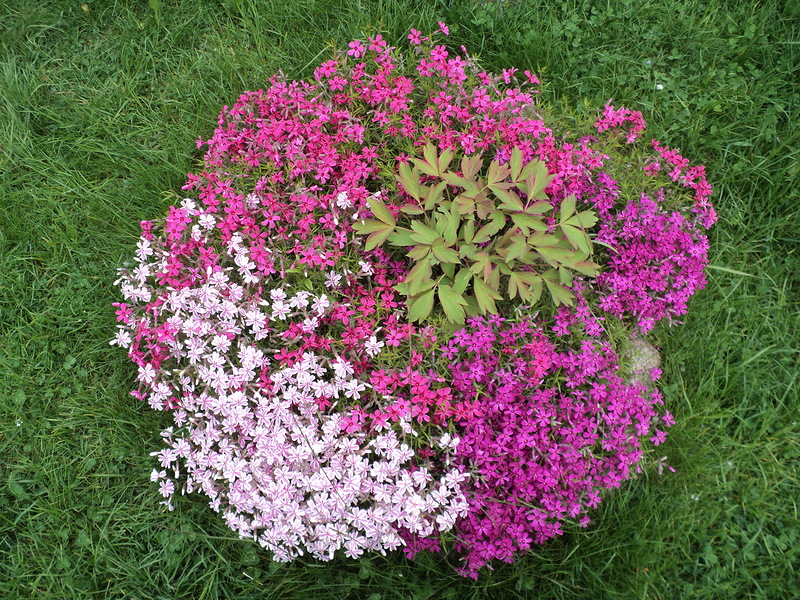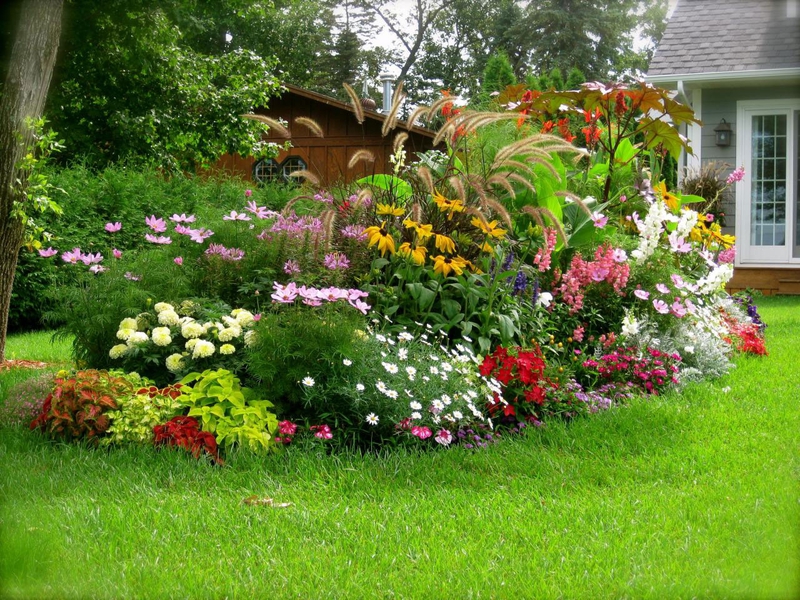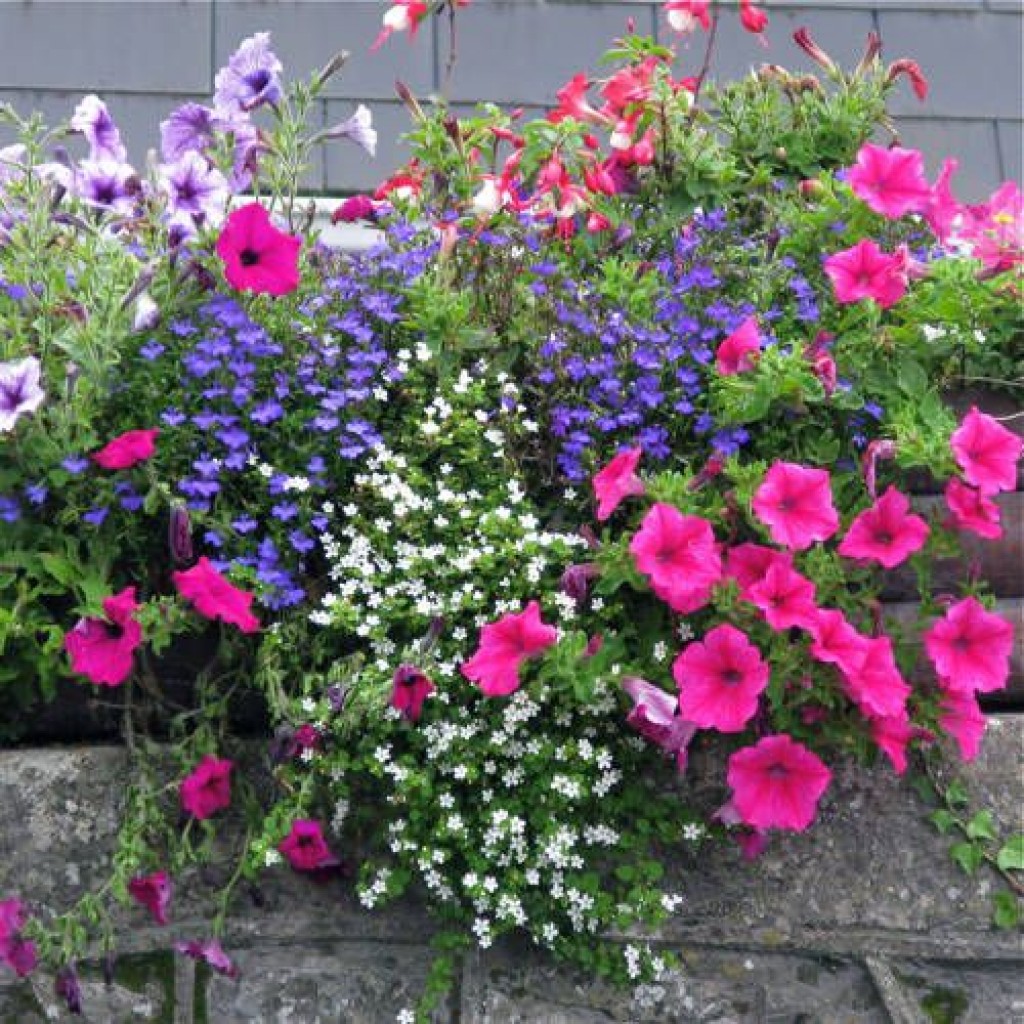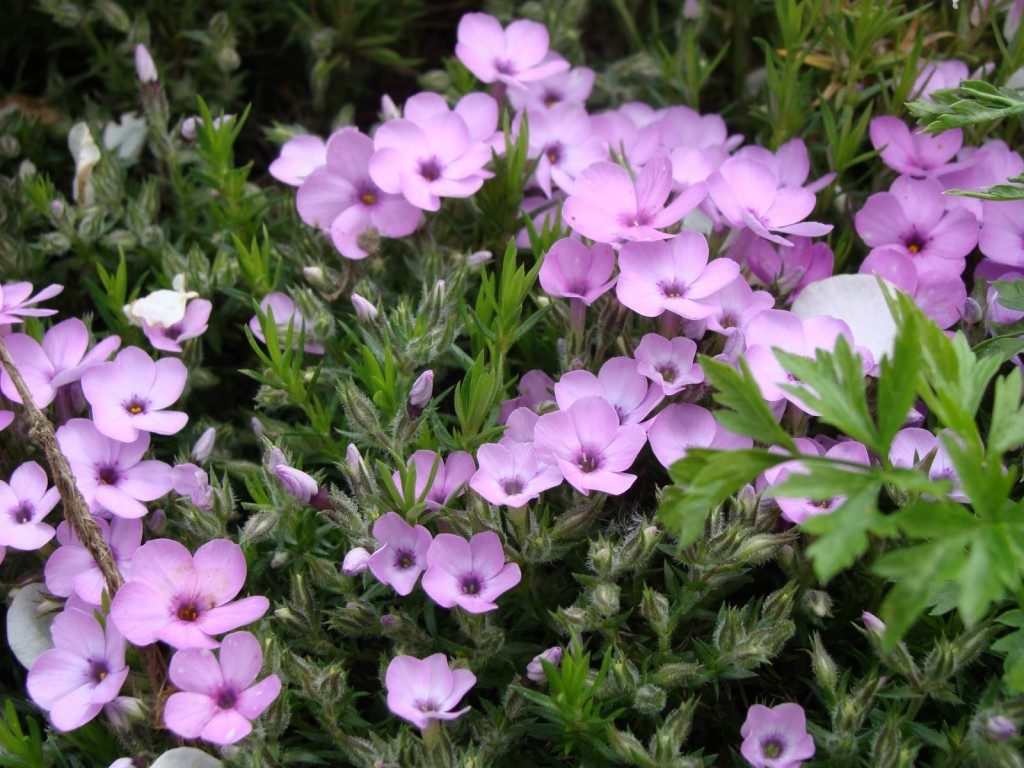Low-growing flowers are an important decorative element for any border or flower bed. With the help of attractive low-growing plants, you can organize an original landscape design that can decorate any backyard area with an overflow of colors.
It is also impossible to make multi-tiered compositions without the help of low-growing plants. These flowers look beautiful in the decoration of borders, are suitable for organizing ornaments on the lawn and on flower beds, and are planted to decorate alpine hills. The size of low-growing flowers is usually no more than 35 cm.
Content
Rules to follow when choosing
When choosing flowers, it is necessary to determine for what purposes the plants are intended. Whether flowers will be shared by tall plants, or will be in the foreground of the flower garden. The flower beds look beautiful, where only undersized plants are located. The choice of these flowers depends directly on the type of flower bed created on the site.
When decorating a composition on a flower bed, it is necessary to consider:
- Color scheme when organizing it;
- Soil moisture;
- Illumination level.
Lighting for stunted plants
To locate a flower bed on a personal plot, you must choose a well-lit place. If you choose an area for a flower bed that is in partial shade or shade, then stunted plants will suffer from a lack of lighting, or, alternatively, choose shade-tolerant flowers.
For a well-lit flower garden, such undersized plants are perfect: alyssum, calendula, marigolds, geraniums with small flowers, purslane, nasturtium. Among the huge variety, you can pay attention to the beautiful appearance of undersized silvery cellosia, dahlia, lobularia, and aubrietta.
Silver cineraria, of course, has earned recognition due to its original appearance and openwork leaveshttps://flowers.bigbadmole.com/en/sadovye-cvety/cinerariya-serebristaya-posadka-vyraschivanie-i-uhod.html
Ornamental-leaved shrubs look no worse than flowering ones. Hostu, silvery cineraria, ornamental cabbage, various types of chlorophytums and coleus are planted for decoration.
If a shady place is still chosen for the location of the flower bed, then you need to select flowers that will not suffer from a lack of lighting. The choice can be stopped on lilies of the valley, muscari, blue scrub, blanket and terry daisies, tricolor violet. Shade and fuchsias, hosts, balsams, begonias and hyacinths tolerate.
Soil moisture for low-growing flowers
Wet soil is, first of all, comfortable conditions for flowers. They love moist, but not waterlogged soil, flowers such as ornamental cabbage, irises, coleus, balsam, hosta, begonia.
Succulents can be planted in a dry place. Periwinkle, rejuvenated, saxifrage and stonecrops can tolerate a temporary lack of moisture.
Low-growing plants for a plain flower garden
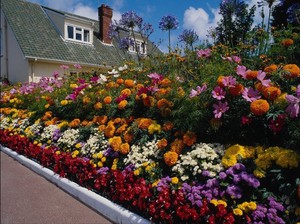 Composition in landscape design for plain or single-color flower beds made of flowers of the same colordiffering in shades.
Composition in landscape design for plain or single-color flower beds made of flowers of the same colordiffering in shades.
To organize a pink flower garden from low-growing plants, you can plant raspberry, pink and purple petunias, geraniums and fuchsia, pink begonia. Together with them, the foreground of the border can be decorated with daisies and primroses. With the help of border flowers, you can arrange the edging of the flower bed in a circle.
The pink color may seem a little boring to some gardeners, in this case it is necessary near monochromatic plants plant other varietiesthat differ in color, size and shape.
To design a blue composition that will bloom all summer, verbena, lobularia, aubrietta, blue and purple petunias, muscari and, forget-me-nots, a low-growing variety of bluebells, purple or blue, are suitable.
DIY mixborder:https://flowers.bigbadmole.com/en/sadovye-rasteniya/miksborder-svoimi-rukami-podbor-rasteniy-shema-i-foto.html
Variegated flower bed of low-growing flowers
During its planning, great attention must be paid to the selection of low-growing plants. Flowers must be matched in size, shape and color. The technique of contrast in color is used during the creation of ornaments.
Quite beautifully, the combination of yellow-orange marigolds with purple aubrietta flowers can be used to organize a flower bed in the form of a clock, when the clock hands, planted from marigolds, stand out against the purple background of the aubrietta.
A striped flower garden is the easiest to make... The most important thing is that the selected plants contrast with each other. For example, white with blue, white with purple, blue with red, etc.
To create a more festive and elegant mood, you can plant a white alyssum carpet for the border.
Varieties of flower beds: description and photo
Irregular flower bed
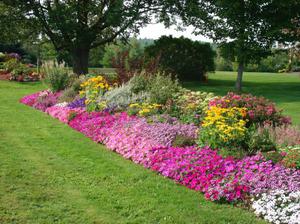 This is a kind of flower garden, in the design of which you can use your imagination. People get bored with the monotony, but when decorating an irregular flower garden, you can enjoy new flowers every year. Of the permanent plants for this type, one can distinguish low-growing trees and shrubs... In addition to them, perennial and annual plants are used, which differ in shades of flowers and flowering time. Some gardeners who are fighting for every centimeter of the plot and harmoniously fit vegetable crops into the design of an irregular flower garden, but select flowering ones:
This is a kind of flower garden, in the design of which you can use your imagination. People get bored with the monotony, but when decorating an irregular flower garden, you can enjoy new flowers every year. Of the permanent plants for this type, one can distinguish low-growing trees and shrubs... In addition to them, perennial and annual plants are used, which differ in shades of flowers and flowering time. Some gardeners who are fighting for every centimeter of the plot and harmoniously fit vegetable crops into the design of an irregular flower garden, but select flowering ones:
- decorative pumpkin;
- cauliflower;
- salad.
Regular flower bed
A distinctive feature of this composition is geometry. Plants are planted in a clear geometric sequence. The shape of the flower garden does not really matter, you can make the flower bed rounded, in the form of a hexagon, rectangle, etc. No difference. Most importantly, the arrangement of flowers must be symmetrical. When choosing plants, you need to pay attention to the flowering time. All selected species must do this at the same time. For the organization of regular flower beds, tea roses, gladioli, and daffodils are planted. A good addition is glandiflora and hosts.
The principle of symmetry must be in everything: the same flowering period, plant height. Even the location of flowers in a flower bed must be symmetrical, so it is necessary to alternate wisely.
Raised flower bed
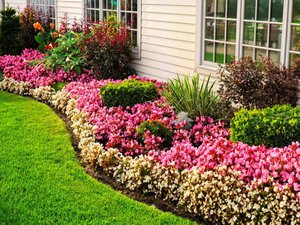 This flower bed is a work of art, and can be a highlight on a personal plot. Plants are planted on a hill, and stone, marble, vine or multi-colored tiles are used for the border.
This flower bed is a work of art, and can be a highlight on a personal plot. Plants are planted on a hill, and stone, marble, vine or multi-colored tiles are used for the border.
Raised look beautiful multi-stage flower beds... But it is rather difficult to make this flower bed, you need to make a lot of effort, invest a lot of money in building materials.Any low-growing plants are suitable for organization, which must be in contrast with tall ones. On a flower garden with pink and yellow tulips, you can plant cream and yellow daffodils. Violets, lilies of the valley and gatsania are planted as border flowers. Delphiniums, cosmeas, liatrices will look spectacular and create a background.
Monoclumba
Flower bed can have various shapes, but must be planted with the same flowers. For example, marigolds of different colors, or multi-colored petunias, begonias, forget-me-nots blue and light blue, or other colors.
Basic requirements for planting low-growing plants
When planting low-growing flowers in a flower bed, follow a number of rules.
Economy and practicality
On the backyard, it is best to organize one large flower bed and plant succinctly plants than to scatter several small ones throughout the garden. The flower garden should not be fancy. Flower beds with curly borders are mesmerizing, but some knowledge is needed to organize them, therefore it is best for a novice gardener to make a flower garden of the usual shape.
Create a plan
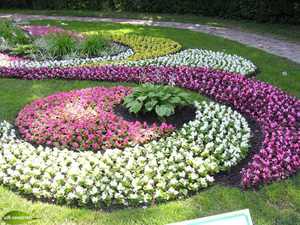 At the initial stage, it is necessary draw a plan for a future flower bed... What will be needed a pattern, paper, pencils. Having sketched the outlines or outlined a flower bed, you need to think about which stunted plants to plant in the background and foreground, which ones to plant in the middle. Variegated combinations will look "gummy" and cut your eyes, so when choosing, you must choose similar shades. If you like the richness of colors, then each type of plant should be divided with border stripes of white flowers.
At the initial stage, it is necessary draw a plan for a future flower bed... What will be needed a pattern, paper, pencils. Having sketched the outlines or outlined a flower bed, you need to think about which stunted plants to plant in the background and foreground, which ones to plant in the middle. Variegated combinations will look "gummy" and cut your eyes, so when choosing, you must choose similar shades. If you like the richness of colors, then each type of plant should be divided with border stripes of white flowers.
Flowers height
When organizing flower beds, you need pay attention to the height of flowers... For the curb, it is best to plant low-growing species that are no more than 25 cm in height. You can plant primroses, phloxes, dwarf irises, astilbe. The center of the flower bed can be decorated with taller flowers. As a rule, preference is given to anemone, roses, hyacinths, begonias, zinnias, narrow-leaved lilacs. Sometimes, in the middle there is an ornamental shrub or tree, and stunted plants are planted around. This solution looks pretty original. Beautiful flower beds come out if you make a gentle pyramid from the same height plants.
Flowering time
To organize a flowering carpet, plants with the same flowering time are chosen. Since the purpose of decorating a flower bed is creating a certain pattern, and it will be a shame if the wrongly chosen plants bloom at different times. In this case, a single composition will not come out.
Perennial low-growing plants: description and photo
If you don't want to mess around with the creation of a flower garden every year, then you can plant perennial flowers and keep order every year: weed, fertilize and remove babies that have sprouted from seeds in time. At the end of flowering, you need to remove the faded inflorescences so that there is no self-seeding, otherwise the flower bed will be thick, and this will affect the development of flowers.
From perennial plants that bloom all summer, you can choose:
- acrid, false and white stonecrop;
- splinter;
- saxifrage;
- periwinkle.
This list can be continued and added: Carpathian bell, undersized astilba, rejuvenated and edelweiss.
Nemophila
Plant, no more than 25 cm high. The bush blooms beautifully, leaves with an openwork and beautiful pattern along the edge. It is used for edging flower beds and for border decoration. Blooms almost all summer. Resistant to low temperatures, therefore, shelter for the winter can be omitted.
Astilbe
The plant is resistant to diseases, unpretentious to the ground, loves watering and winters well. It is used in the design of borders, along with the rest of the perennial. Flowers can be blue, pink, purple, red, white.
Periwinkle
The bush has creeping stems up to 25 cm in size. Blue flowers in a circle are 3.5 cm. Likes well-fertilized and moist soil, tolerates partial shade. They are planted in flower beds, in borders.
Features of growing periwinkle, photo of garden flowers:https://flowers.bigbadmole.com/en/sadovye-cvety/osobennosti-vyraschivaniya-barvinka-foto-sadovyh-cvetov.html
Lily of the valley
Its small snow-white bells and wide elliptical leaves look great when paired with tulips. After flowering, red peas form on the bush. They are unsuitable for food, therefore, if there are children, you need to warn them about it.
Annual low-growing plants: description and photo
Marigold
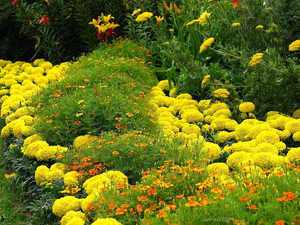 Reliable and unpretentious annuals. The persistent aroma scares away harmful insects, so there is a small chance that pests will start on the flower bed. It has abundant flowering, the flowers themselves in a circle can be more than 3.5 cm. Moreover, marigolds cover the entire area with a carpet. They easily experience a lack of moisture, but they rot from waterlogged soil.
Reliable and unpretentious annuals. The persistent aroma scares away harmful insects, so there is a small chance that pests will start on the flower bed. It has abundant flowering, the flowers themselves in a circle can be more than 3.5 cm. Moreover, marigolds cover the entire area with a carpet. They easily experience a lack of moisture, but they rot from waterlogged soil.
Ageratum
An exotic plant perfectly takes root in temperate climates, therefore it is successfully planted in a flower bed. Blooms all summer, propagated by seeds. Used on lawns, curbs and along the edge of flower beds.
Daisies
A popular annual that attracts with its bright and cute flowers. There are blanket, double and simple flower forms. In addition to this plant, bulbous flowers are planted. Daisies are used to frame flower beds, or cover the entire area with them.
What's the bottom line? Some people like marigolds, some are crazy about lilies of the valley and daisies, and some prefer decorative leaf flowers. When decorating a flower bed in a backyard, it is necessary to select those undersized plants that you like best, and preference should be given to those that will develop best in your climatic region.
